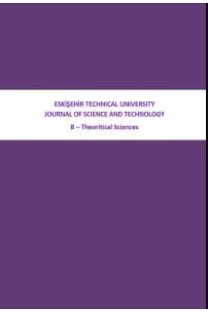A GEOGRAPHIC INFORMATION SYSTEM DESIGNED FOR DISASTER MANAGEMENT
Disaster Management, Hazard Mitigation, GIS, Geodata, Resilience
___
- Güven, İ., T. Değirmendere’nin Yer Bilimleri ve Yapı Özelliklerine Göre GIS Tabanlı Deprem Risk Analizi. PhD, Kocaeli Üniversitesi, Fen Bilimleri Enstitüsü. 2016.
- [2] Bülent Kiper Jeoteknik Müh. Ltd. Şti., Değirmendere (Kocaeli) İmar Adaları Ayrıntılı Jeolojik Jeoteknik Etüt Raporu, Bülent Kiper Jeoteknik Müh. Ltd. Şti., 2002.
- [3] Özalaybey S., Zor E., Tapırdamaz M.C., Tarancıoğlu A., Özalaybey S. Ç., Erkan B., Karaaslan A., Alpaslan E., Ergin M., Ergintav S., Tan E., Kocaeli İli için Zemin Sınıflaması ve Sismik Tehlike Değerlendirme Projesi, TÜBİTAK, 5057105, 190, 2008.
- [4] Konak M., Gölcük-Değirmendere (Kocaeli) Bölgesinde 17 Ağustos 1999 Depreminde Oluşan Yapı Hasarlarına Zemin Özelliklerinin Etkisi, Yüksek Lisans Tezi, Kocaeli Üniversitesi, Fen Bilimleri Enstitüsü, Kocaeli, 2002, 128199.
- [5] Barka A., Akyüz S. H., Altunel E., Sunal G., Çakir Z., Dikbaş A., Yerli B., Armijo B., Meyer B., Chabalier J. B., Rockwell T., Dolan J., Hartleb R., Dawson T., Christofferson S., Tucker A., Fumal T., Langridge R., Stenner H., Lettis W., Bachhuber J., Page W., The surface rupture and slip distribution of the 17 August 1999 Izmit earthquake M=7.4, North Anatolian Fault, Bull. Seism. Soc. Am., 2002, 92(1), 43-60.
- [6] Livaoğlu, Hamdullah, T. Serkan Irmak, and I. Talih Güven. "Seismic vulnerability indices of ground for Değirmendere (Kocaeli Province, Turkey)." Bulletin of Engineering Geology and the Environment (2017): 1-11.
- [7] Livaoğlu, Hamdullah, and T. Serkan Irmak. "An empirical relationship between seismic bedrock depth and fundamental frequency for Değirmendere (Kocaeli-Turkey)." Environmental Earth Sciences 76.20 (2017): 681.
- [8] Myers J. H., Alpert M. I. Determinant buying attitudes: Meaning and measurement, J Mark, 1968, 32, 13–20.
- [9] Saaty T. L., A scaling method for priorities in hierarchical structures, Journal of mathematical psychology, 1977, 15(3), 234-281
- [10] Yaralıoğlu K., Uygulamada Karar Destek Yöntemleri, İlkem Ofset, İzmir, 2004.
- [11] Timor M., Analitik Hiyerarşi Prosesi, Türkmen Kitapevi, İstanbul, 2011.
- [12] Kösten Özgen E. Y., Kutluca A. K., Özer M. F., Irmak T. S., Öztekn D., “Hazard Analysis for Urban Hazard Risk Management for Gölcük- Değirmendere District of Kocaeli” Projesi, TÜBİTAK, 112M421, 2015.
- ISSN: 2667-419X
- Yayın Aralığı: Yılda 2 Sayı
- Başlangıç: 2010
- Yayıncı: Eskişehir Teknik Üniversitesi
Resul ÇÖMERT, Dilek Küçük MATCI, Uğur AVDAN
İNSANSIZ HAVA ARAÇLARININ AFET YÖNETİMİNDE KULLANIMI
Murat UYSAL, Mustafa YILMAZ, İbrahim TİRYAKİOĞLU, Nizar POLAT
BEHAVIOR OF A DENSE NONPLASTIC SILT UNDER CYCLIC LOADING
Eyyüb KARAKAN, Alper SEZER, Nazar TANRINİAN, Selim ALTUN
THERMAL REMOTE SENSING TECHNIQUES FOR STUDYING EARTHQUAKE ANOMALIES IN 2013 BALOCHISTAN EARTHQUAKES
KÜTAHYA YEŞİL MİNARENİN KAPALI VE AÇIK ŞEREFELİ DİNAMİK DAVRANIŞLARININ KARŞILAŞTIRILMASI
Mahmud Sami DÖVEN, Cavit SERHATOĞLU, Onur KAPLAN, Ramazan LİVAOĞLU
EVALUATION OF DEFORMATION LIMITS IN CODES FOR REINFORCED CONCRETE COLUMNS
Muhammed Alperen OZDEMİR, İlker KAZAZ
DEPREMLERDE GÖZLENEN ETKİLERİN GÖNÜLLÜ KATILIMIYLA HIZLI BİR ŞEKİLDE TOPLANMASI
Muammer TÜN, Emrah PEKKAN, Sunay MUTLU
BETONARME BİNALARIN PATLAYICI KULLANILARAK İÇE YIKIMINDA BETON DAYANIMININ YAPI DAVRANIŞINA ETKİSİ
Hakan ÖZMEN, Kurtuluş SOYLUK, Özgür ANIL
ESKİŞEHİR ALÜVYON FORMASYONUNUN KONUMSAL DEĞİŞKENLİĞİNİN CPT ÖLÇÜMLERI İLE BELİRLENMESİ
